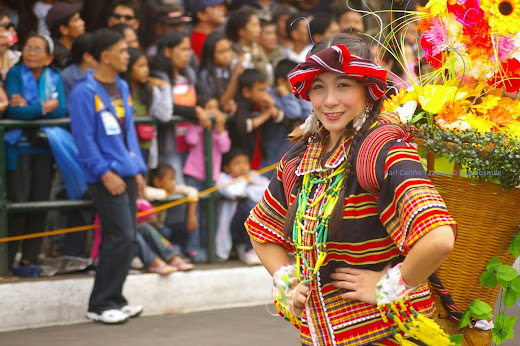Panagbenga closes after five weeks since its launching on February 1. And once again, we receive negative and positive feedbacks from visitors, critics, observers, volunteers, documenters, politicians, etc. etc.
On the business side, I do believe the festival does help garner income during this festivity that once was a lean season before the creation of the event. The festival’s purpose to help the hospitality businesses during this season is doing its purpose.
Credits go not only to the organizers who conceptualized the idea but also to the members of the media who started covering and promoting the event from its conception until it grew to what it is today.
I only started covering the festival in 2005 as a hobbyist photographer challenging myself to get better photo with my next shot. I still haven’t found the Panagbenga masterpiece that can show the meaning of Panagbenga in just one photo.
But here are some of my documentations for this year’s events, not the best photos I got coz I'm reserving them for something else, but few chosen photos from the 2,000+ shots I took that I thought would best describe the scenes that unfolded during the 5-week festivities. The good, the bad, the ugly - but it's up to you to judge which is which.

A cushion of flowers. After dancing the tiring 4 kilometer street dance, this participant still have a smile left for photographers.

A touch of Benguet. A dancer donning the "kayabang" a unique carrying basket found only in Benguet.

Beads to the teeth. A dancer donning Cordilleran inspired beads with braces that seem to supplement the costume.

Aloha dancers. These dancers lead by Karren Anton had been gracing the festival for years.

Flower face. Even the teacher accompanying the young street dancers is decorated with flower paints adding attraction to the parade.

Learning from the pros. Little kids watch the street dancers intently. Perhaps they will soon be the ones performing in the streets.

The birdsmaster. Once again, celebrities became added attractions to the float parade where they became the main subject of the crowd.

Everyone is a photographer. As celebrities passes, all cameras from the crowd go up even the sorts that can't take acceptable images.

China girl. Baguio's sister Cities joined the parade exposing their cultures and some legs.

Giant sunflowers made of flowers

This little policeman is one of the street parade's attraction frequently stealing the show.


Instead of watching the crowd, these two crowd control volunteers have chosen to watch and document the parade instead ignoring the instructions they agreed upon as volunteers.

With not enough accommodation during the peak of the event, these people came prepared but most of them did not use proper waste disposal that the area smelled of human excrements and garbage.

Big network floats are crowded with so many people that getting a good shot of their float is next to impossible. Perhaps they have immunity to the rules that only few people should accompany their floats.

And the celebrities themselves don't follow the rules like Garry V who went down from his float to take pictures with the crowd disrupting the flow of the parade.

And this new TV network reporter thinks he's immune to the rules ignoring the instructions that there should be no live interviews during the parade.

This giant bird could have been one of the unique photography subjects without those ugly ads. This company should learn to create a technique that can include their logos without creating a mess of the design.
But in spite of the negative images, there are more positive ones to look up to. After all more than a million visitors each year come to watch this biggest crowd drawer in the North.

With the huge crowd that came to watch the events, the hospitality businesses and the flower industry thrived and the once lean season is now the peak of Baguio and Benguet.
Unfortunately, some of the most unique part of the festival are not seen by most.


Here is a lady participant of the competitions in the Pony Boys' day where the City's horseback riding business owners participate.

Participants of the horse racing competition, some riding on bare backs, eat dusts as they try to outrun each other.

Contestants fought for the last chair in the Pony Boys version of "trip to Jerusalem". They call it the "musical chair".

Another unique feature of the festival is the family painting activity dubbed as "let a thousand flowers bloom" where anyone can join and interpret the festival on canvas. The paintings are later showcased in the main parades.

There's good, there's bad, there's ugly, but this is our festival where even a balloon vendor enjoys to document.
There are more positive and negative things to talk about Panagbenga and with my own collection of photos alone, there are the heroes and the "epals". But I still believe our festival is one of the most orderly in the Country.

And many of the businesses and participants are rewarded, some with good businesses, some with prizes. Even this photographer was fortunate enough to win a third prize in the Photo competition. And even the trophies are beautifully carved with designs that depicts the unique culture of Benguet.

So the best way to say goodbye to this 5-week festival is with a bang. Until next year.





























